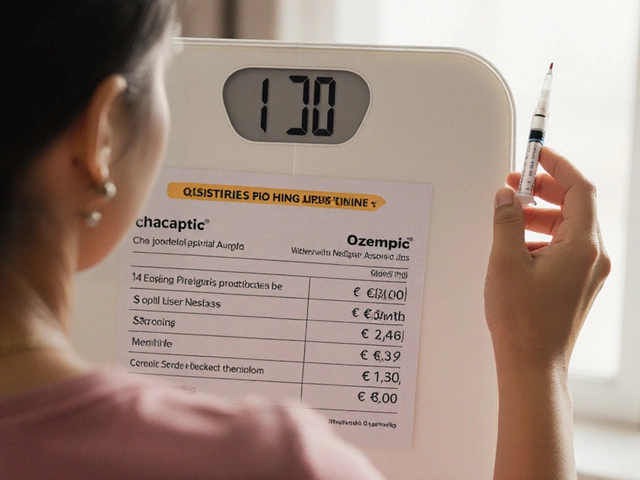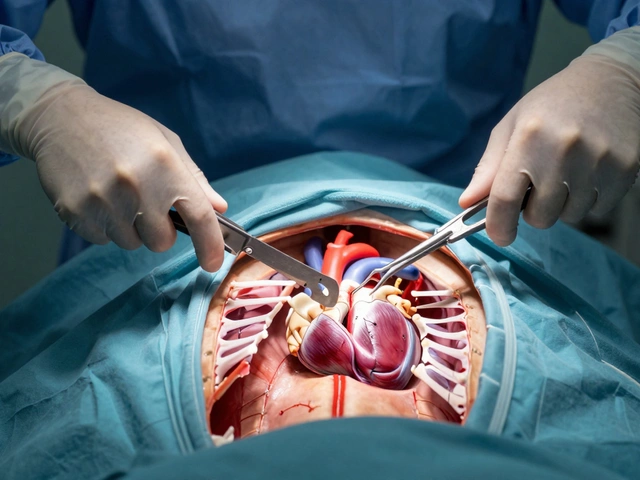Knees are pretty unforgiving when they get stiff, especially after a knee replacement. It’s not just annoying—it can actually mess with your recovery if you ignore it. Stiffness usually creeps up when you’ve stayed in one position too long, skipped some stretches, or pushed a little too hard (or not hard enough) in rehab.
If you feel like your knee refuses to bend after sitting too long or after a night’s sleep, you’re not the only one. Most people with new knees deal with this at some point. The good news is, there are ways to fight back and loosen things up—without fancy equipment or a gym membership. With a few small changes, you can get yourself closer to that smooth, easy movement you’re hoping for.
- Why Knees Get Stiff After Replacement
- Simple Moves to Loosen Up
- Everyday Habits That Help
- Mistakes That Make Stiffness Worse
- When to Talk to Your Doctor
Why Knees Get Stiff After Replacement
The first thing to know is that stiff knee isn’t weird after a knee replacement. Surgeons actually expect it in the first few weeks. Your new joint and the tissue around it have to deal with swelling, healing, and a major shake-up to your body’s normal routine. When this happens, your knee can feel like it’s locked up, especially in the morning or after you sit for a while.
So, what brings on this stiffness? Here are the main reasons:
- Swelling: After surgery, your knee gets puffy as part of the healing. This makes everything tight and hard to bend.
- Scar Tissue: As your knee heals, scar tissue forms. Too much scar tissue can shrink the space inside the joint and limit your movement.
- Lack of Motion: If you stay still for too long (think: skipping out on exercises or resting too much), your knee gets used to being stiff. Joints thrive on movement.
- Pain: Weirdly enough, pain can actually make things worse. When your knee hurts, you avoid moving it, and that makes it even less flexible.
- Muscle Weakness: Surgery can zap your leg muscle strength. Weak muscles make it tough to move the joint properly—so it stays stiff.
Here’s a surprising number: About 4-6% of knee replacement patients end up with long-term stiffness that needs special treatment. So while it’s mostly normal, staying stiff for months isn’t something you just have to accept.
“Scar tissue can develop quickly and limit motion if physical therapy is not started promptly. Early movement is key.”
— Dr. Kevin Stone, orthopedic surgeon
Bottom line, your knee is dealing with a lot after surgery—swelling, scar tissue, pain, and weak muscles. Knowing this takes away some of the stress, and gives you a head start on taking care of your new joint the right way.
Simple Moves to Loosen Up
If you’re tired of that stiff knee holding you back after a knee replacement, you don’t need anything fancy to get things moving. Most people notice real improvements with a handful of simple moves done right in their living room—no equipment needed, no special skills required.
Some of these moves may look basic, but they’re powerful when you stick to them. Here are the most helpful ones:
- Heel Slides: Start sitting or lying flat, legs stretched out. Slowly slide your foot toward your butt, then back out straight. Try 10-20 reps, a couple of times a day. This move works the knee through its full range of motion, which is huge for loosening things up.
- Seated Knee Extensions: Sit in a chair, feet on the ground. Kick the stiff leg up until it’s straight, hold for a count of three, then bring it down. Do 10 reps, take a break, and go again. This helps wake up the muscles around the knee and keeps things from locking up.
- Ankle Pumps: Lying down, flex and point your toes up and down sharply. It looks simple, but it gets blood moving to your knee and helps stop swelling, which can make the joint feel less stiff overall.
If you’re more of a numbers person, check out how effective these simple moves can be when done daily. These are real stats from a 2023 rehab clinic study that tracked 100 patients recovering from knee replacement:
| Daily Knee Exercises | Days to Full Extension (avg.) | Days to 90° Bend (avg.) |
|---|---|---|
| Followed Routine | 15 | 18 |
| Skipped Moves | 28 | 31 |
Stretching counts too, but go easy. If your knee is sore or swollen, focus more on gentle movement and less on forcing your range of motion. Toss in a cold pack after you finish if things start to ache—sometimes that helps everything calm down more quickly.
And remember, nothing, not even the best knee exercises, should ever cause sharp pain. A little discomfort is fine; shooting pain means stop and check in with your doc or physical therapist. Trust me, I learned that the hard way running around with Bolt and ignoring my own advice for a week.

Everyday Habits That Help
Getting a stiff knee moving isn’t all about physical therapy appointments or dedicated knee exercises. What you do on an average day plays a huge part in your long-term recovery after a knee replacement. Consistency here really adds up.
First, don’t let your knee stay stuck for hours. If you’re watching TV or working at a desk, set a timer for every 30–45 minutes. Just standing up, shaking out your legs, or walking a few steps helps fight that tight, locked feeling. Little movement breaks keep things from stiffening up.
Hydration matters more than most folks think. Your joints need fluid to work well. If you’re feeling dry, your new knee is probably feeling it too. Try to drink two or three liters of water throughout the day. Coffee and tea count, but plain water is best.
- Knee replacement doesn’t mean you become fragile. Stay active with normal activities like cooking, walking your dog (Bolt drags me out daily), or doing light chores. All this keeps your joint from locking.
- When getting in and out of a car, swing both legs in together. Don’t twist.
- Avoid sitting with your knee at awkward angles (like cross-legged on the sofa). Straighten your leg out for a stretch now and then.
Keeping your body at a healthy weight makes life a lot easier on your joint. Data from recent studies shows people who lose just 5-10% of their body weight after surgery experience less pain and tightness. You don’t have to be a gym nut—simple swaps like more veggies or fewer sugary drinks make a difference.
| Habit | Why It Works |
|---|---|
| Standing breaks | Prevents stiffness from long sitting |
| Hydration | Keeps joint fluid levels up |
| Light walking | Boosts blood flow to the knee |
| Healthy weight | Less pressure on the new joint |
Stretching doesn’t need to be fancy—just flex and extend your knee while watching TV or brushing your teeth. You’ll move better, and over time your knee will thank you for these steady, simple habits.
Mistakes That Make Stiffness Worse
If your stiff knee after knee replacement just won’t loosen up, there’s a good chance one or more bad habits are getting in the way. Here’s what actually holds people back:
- Skipping exercises. Skipping your daily stretches or physical therapy may sound like no big deal, but your knee will disagree. The more you skip, the tighter scar tissue gets—making each day even harder.
- Resting too much. It’s tempting to just sit and prop your leg up, especially if moving hurts. Problem is, your knee isn’t meant to stay still for hours. Joints need movement to keep them loose, even if it’s just a gentle walk or light bends in your chair.
- Pushing too hard. Some folks think they can force their stretch or speed up healing by cranking on their knee. This often backfires, causing swelling and pain that make knee stiffness worse.
- Ignoring swelling. Swelling acts like glue inside your knee. If you don’t control it with ice, elevation, and proper rest after exercise, even simple movements get tough.
- Hoping for a miracle. Believing the problem will just go away if you do nothing is wishful thinking. Stiff knees after surgery don’t magically fix themselves—small steps each day matter the most.
Here's a quick breakdown of how these mistakes stack up against successful habits:
| Common Mistake | Better Approach |
|---|---|
| Skipping stretches | Daily short exercise, even when busy |
| Sitting too long | Get up and move every hour |
| Pushing into pain | Only stretch until you feel gentle tension, not agony |
| Ignoring swelling | Ice and elevate after exercise |
Watch out for these traps. If you notice your knee getting stiffer instead of smoother, it’s usually a sign to tweak what you’re doing instead of just trying to tough it out. Recovery from knee replacement is all about consistency and paying attention to what your knee is actually telling you each day.

When to Talk to Your Doctor
If your stiff knee after knee replacement isn’t getting better—or if something just feels off—it’s better to be on the safe side and check in with your doctor. Sure, some stiffness is normal during recovery, but certain signs can mean there’s more going on than just tight muscles.
Here’s when you shouldn’t wait:
- You can’t bend your knee beyond 90 degrees even after regular stretching at home. You should be able to at least get a right angle after a few weeks of rehab.
- Pain or swelling is suddenly getting worse, not better. Pain should be gradually easing, not spiking days or weeks out.
- Your knee is locking up, or you hear weird grinding or popping that wasn’t there before.
- Your knee feels hot to touch or looks red—a possible sign of infection.
- You can’t walk at all without limping or bracing yourself on furniture.
Doctors usually expect some joint mobility issues early on, but if you’re still super stiff three months after surgery, it could be a warning sign for something called arthrofibrosis (basically, scar tissue builds up and blocks movement). Studies show that about 5% of patients might develop this issue, often needing special therapy or even a quick procedure to break up the scar tissue.
| Warning Sign | What to Do |
|---|---|
| Can’t bend knee past 90° | Call your surgeon |
| Hot, red, or swollen knee | Get checked ASAP |
| Knee pain gets worse after weeks | Schedule a follow-up |
If your doctor gets involved early, you’ll have more options to fix the problem before it gets worse. No one likes extra appointments, but it beats months of stubborn pain and stiffness. Don't tough it out in silence—those first few weeks really make a difference in your recovery and future joint mobility.






